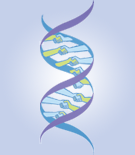User:Marie-Eve Val: Difference between revisions
| Line 4: | Line 4: | ||
[[Image:OWWEmblem.png|thumb|right|Marie-Eve Val (an artistic interpretation)]] | [[Image:OWWEmblem.png|thumb|right|Marie-Eve Val (an artistic interpretation)]] | ||
'''Marie-Eve VAL'''<br/>Institut Pasteur<br/>25 rue du Dr. Roux<br/> | |||
75015 Paris, France<br/>[[Special:Emailuser/Marie-Eve_Val|Email me through OpenWetWare]] | |||
75015 Paris, France | |||
==Education== | ==Education== | ||
Revision as of 08:05, 13 December 2011
I am a new member of OpenWetWare!
Contact Info

Marie-Eve VAL
Institut Pasteur
25 rue du Dr. Roux
75015 Paris, France
Email me through OpenWetWare
Education
- 2008 - PhD
Centre de Génétique Moléculaire (Gif-sur-Yvette) , Francois-Xavier Barre's lab
Study of the system of chromosome dimer resolution in Vibrio cholerae and its implication in the control of the lysogeny of the phage CTX coding for the choleric toxin - 2003 - Engineering degree in biotechnology and Master in cellular and molecular biology
ESBS (Strasbourg, Freiburg, Karlsruhe and Basel) - 1999 - Technician degree in Biotechnology
LVC (Gif-sur-Yvette)
Professional Training
- Since 2009 - Post-Doctoral research training
Institut Pasteur (Paris) - Didier Mazel's lab - 2004 / 2008 - PhD Thesis
Centre de Génétique Moléculaire (Gif-sur-Yvette) , Francois-Xavier Barre's lab - 2004 - Engineer position
Génoscope - Consortium National de Recherche en Génomique (Evry) - Génolevures Consortium - 2003 - Master thesis
Center of Marine Biotechnology, UMBI (Baltimore) , Hal Schreier's lab - 2002 - Engineer training
IGBMC (Strasbourg) - Olivier POCH's lab - 2001 - Engineer training
Biozentrum (Basel) - Peter Philippsen's lab - 1999 / 2000 and summer 2002 - Technician position
AGROGENE(Moissy-Cramayel) - 1999 - Technician training
Centre de Génétique Moléculaire (Gif-sur-Yvette) ,Fred Boccard's lab
Research interests
I am a post-doctoral research fellow in Didier Mazel's lab at the Institut Pasteur of Paris. I have a great interest in bacterial genome structuration, organization and maintenance ... and a special interest in multipartite genomes. Owing to its bi-chromosomal genome architecture and its importance in public health, Vibrio cholerae, the causative agent of cholera, has become a preferred model to study bacteria with multipartite genomes. My approach is to drastically alter V. cholerae’s genome structure to gain more insight into multipartite genomes. To do so, I developed a site-specific recombination-based engineering tool, which provides us with a powerful means to massively reorganize in principle any prokaryotic genome. This genetic tool consists in harnessing the λ and HK022 recombination systems to perform a large panel of genome reorganizations. By controlling the location and the orientation of each partner recombination site, we can obtain a large variety of genome rearrangements. The laboratory of Didier Mazel was an ideal place to initiate such a project since they have developed a large set of genetic tools to work in the vibrios and Didier Mazel has substantial knowledge and experience in site-specific recombination, bacterial genetics and genome analysis.
Publications
- Das B, Bischerour J, Val ME, and Barre FX. Molecular keys of the tropism of integration of the cholera toxin phage. Proc Natl Acad Sci U S A. 2010 Mar 2;107(9):4377-82. DOI:10.1073/pnas.0910212107 |
Molecular keys of the tropism of integration of the cholera toxin phage.
- Génolevures Consortium, Souciet JL, Dujon B, Gaillardin C, Johnston M, Baret PV, Cliften P, Sherman DJ, Weissenbach J, Westhof E, Wincker P, Jubin C, Poulain J, Barbe V, Ségurens B, Artiguenave F, Anthouard V, Vacherie B, Val ME, Fulton RS, Minx P, Wilson R, Durrens P, Jean G, Marck C, Martin T, Nikolski M, Rolland T, Seret ML, Casarégola S, Despons L, Fairhead C, Fischer G, Lafontaine I, Leh V, Lemaire M, de Montigny J, Neuvéglise C, Thierry A, Blanc-Lenfle I, Bleykasten C, Diffels J, Fritsch E, Frangeul L, Goëffon A, Jauniaux N, Kachouri-Lafond R, Payen C, Potier S, Pribylova L, Ozanne C, Richard GF, Sacerdot C, Straub ML, and Talla E. Comparative genomics of protoploid Saccharomycetaceae. Genome Res. 2009 Oct;19(10):1696-709. DOI:10.1101/gr.091546.109 |
Comparative genomics of protoploid Saccharomycetaceae.
- Val ME, Kennedy SP, El Karoui M, Bonné L, Chevalier F, and Barre FX. FtsK-dependent dimer resolution on multiple chromosomes in the pathogen Vibrio cholerae. PLoS Genet. 2008 Sep 26;4(9):e1000201. DOI:10.1371/journal.pgen.1000201 |
FtsK-dependent dimer resolution on multiple chromosomes in the pathogen Vibrio cholerae.
- Val ME, Bouvier M, Campos J, Sherratt D, Cornet F, Mazel D, and Barre FX. The single-stranded genome of phage CTX is the form used for integration into the genome of Vibrio cholerae. Mol Cell. 2005 Aug 19;19(4):559-66. DOI:10.1016/j.molcel.2005.07.002 |
The single-stranded genome of phage CTX is the form used for integration into the genome of Vibrio cholerae.